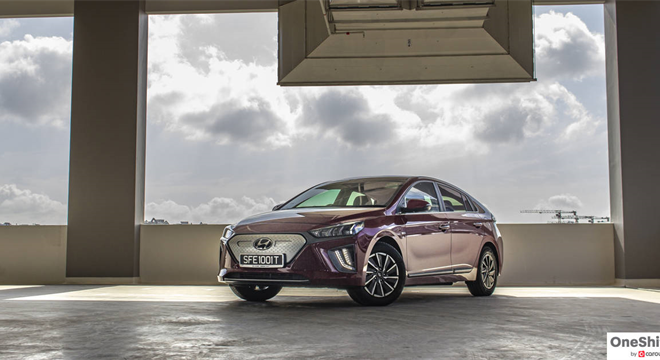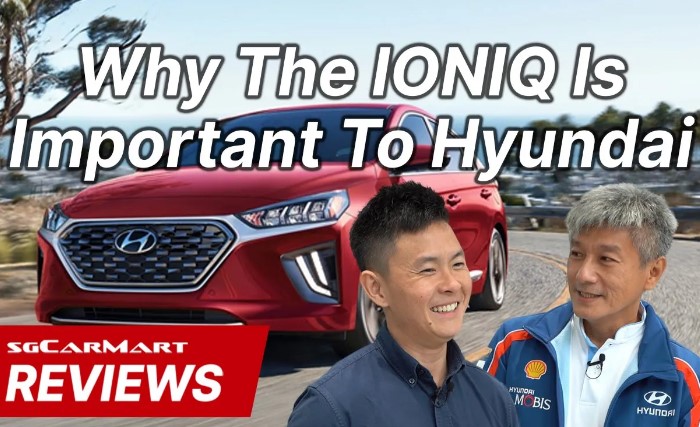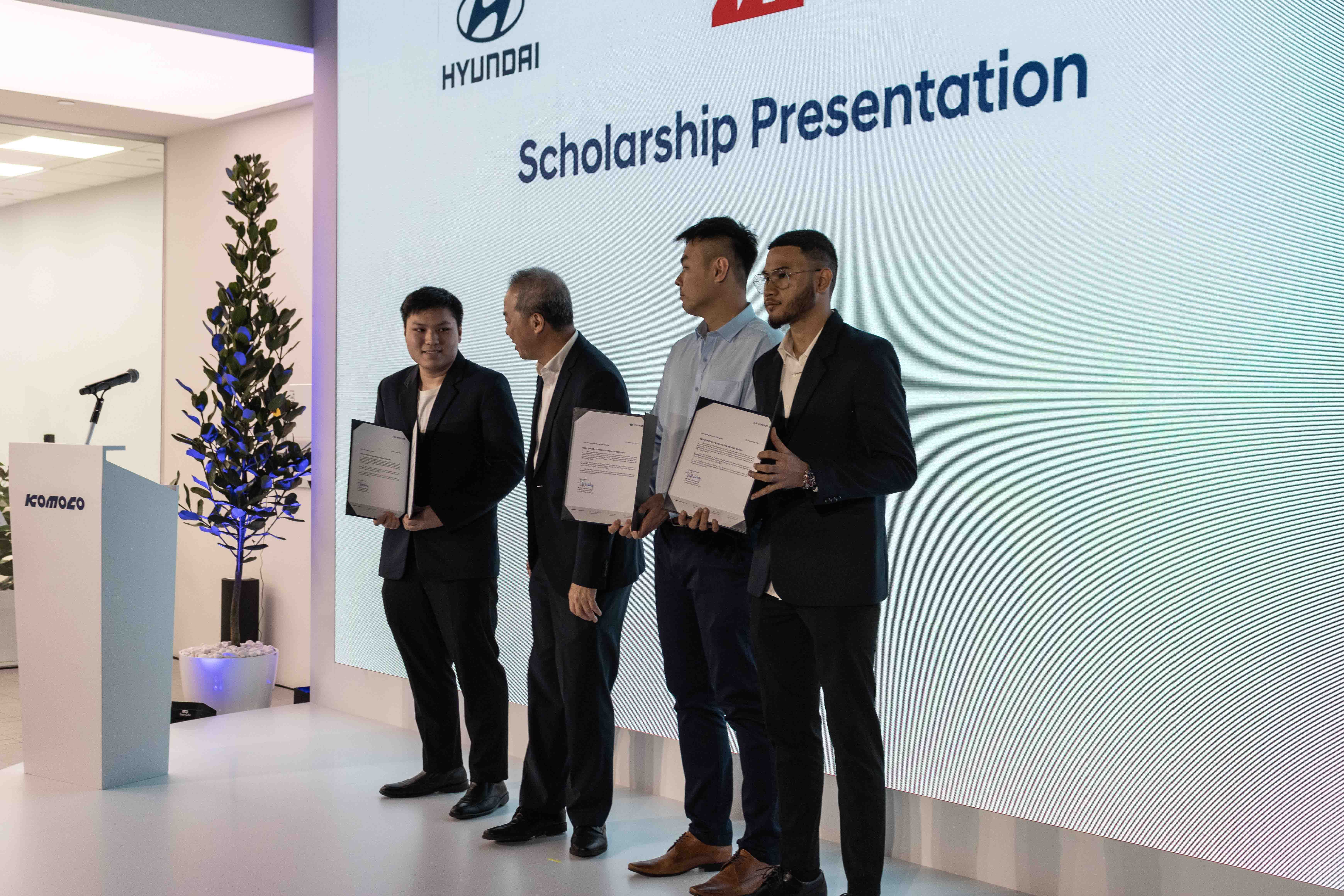Singapore sets itself up to phase out fossil fuel-powered cars by 2040. It may seem a long way from now, and public infrastructure is far from ready to accommodate such a shift. This however there are already brands which are going all out to establish themselves in our market, with electric-only offerings.
One of these brands is Hyundai. The Korean manufacturer has recently been busy with upping the game, by casting in stone their new design language, and ensuring that their quality is aligned with what the end user wants. They have also been equally busy with developing their electric range of cars.
The first IONIQ Electric showed up on our shores just two years ago, and Hyundai has just done a good reworking of the car. That frosted baby-bottom smooth grille, makes way for a new textured one, which now houses vents for… ventilation.
Its new face features restyled headlamps and daytime running lights, while the rear end illumination has also been tidied up. With the edgier lighting, the rims have also been swapped out to match IONIQ's restyling. We liked that Hyundai had also done away with that rubberised antenna, which in my experience, tends to deteriorate over time, in favour of a more robust fin-shaped one. Four new paint options have also been made available.
Sadly though, the IONIQ Electric is now a Category B COE car, meaning that you would find yourself shelling that extra mulah in-order to enjoy the perceived saving of our blue planet.
Inside
A redesigned dashboard, its 8” infotainment system, which supports Apple Carplay and Android Auto, now sits proud upon the dash, rather than being inset; and Hyundai has done away with their previous “Piano Key” air-conditioning controls, in favour of a neater touch-screen unit.
The centre console however, has been retained. Its quirky push-button drive selector, and wireless mobile device charging “bin”, take a while to get used to. Among the practical carry-overs, the ventilated front seats are to me the best feature, and prove their worth especially on warmer days.
The Electric variant of the IONIQ , versus the Hybrid model, also benefits from an electric parking brake, operated by a switch on the centre console. We like it not so much for how it functions, but more of the fact that there is no foot brake pedal (like the one on the Hybrid) which occasionally gets in the way of your left shin, when you want to use the footrest.
Aesthetics aside, the Hyundai IONIQ offers ample space for four-and-a-half people, and carries up to 350 litres of cargo at the rear.
The Drive
A new 38.3kWh battery adds another 36% of energy-storing capacity, bringing up the IONIQ Electric’s range to a maximum of 311km. Driving the IONIQ Electric in the city is where you can utilise its instantaneous acceleration to the fullest, between the lights. Its 295Nm, is readily available once your foot is down, and all you get is a muted hum from the electric motor, and equally muted rumbling from the wheels, intruding into the cabin.
Even with the added weight disadvantage over the Hybrid model, this car feels nimble enough to be entertaining. For the electric model, Hyundai has also uprated the rear brake rotors to counter the extra heft.
The IONIQ Electric utilises a simpler Torsion Beam setup at the rear, which takes up less space than the multi-link setup its hybrid sibling is equipped with. This is to help accommodate the large underfloor battery. While this does affect the car’s handling, it is firm enough to oblige in a little cornering entertainment.
As with all EVs, regenerative braking plays a big part in scavenging energy, while shedding speed. Hyundai had gotten the formula right, with a pair of paddle shifters, which are intuitive to operate. This allows you to adjust the amount of regenerative braking to match conditions.
You can let the car decide for you how much “regen” is needed, but I find that the system is a little too “safe”, often slowing you down way too early.
Shutting the regenerative braking off, allows you to coast from light to light, just like you would on neutral; and you would be surprised at how much distance you can cover on just a pulse of acceleration. Holding the left regenerative braking paddle re-engages the IONIQ's regenerative braking, a thoughtful feature, especially if you do need to stop the car quickly, without “regen” dialed up.
Charging with an AC charger will take approximately 6 hours for an 80% fill from zero, while fast DC current chargers will do the same in approximately an hour.
Our Thoughts
Hyundai is making waves with its offerings. The facelifted IONIQ range here is loaded with attractive creature spoils. While their EV is marketed for the masses, this one we tested does not come cheap, with a sticker price of $157,999*.
While finding yourself a convenient public charger can still prove to be a challenge. It is those who have a space for their own slow AC charger, to allow the car to charge when not in use, who will truly benefit most from the lower running cost of the IONIQ Electric. After all, they would be the ones who would not need to hunt or fight for a charging station
*accurate at time of review
In Summary
We Like
Loaded with features. Pleasant driving characteristics. Tastefully restyled. Clever regenerative braking paddles. Improved range.
We Don't
Automatic regenerative braking reacts too early.
Verdict
If you still feel that a regular car would guilt trip you to not saving the environment, and you do not have the space for a charger, the IONIQ Hybrid might be better suited for you. But for those who want lower running cost, and can afford the space at home, the IONIQ Electric has got plenty to offer.






